Stipe Takes on Gierach, R.E.M. Records Fly Fishing Album

WHEN MICHAEL STIPE, LEAD SINGER FOR THE BAND R.E.M., MADE A STRING OF APPEARANCES ON THE COLBERT REPORT AROUND THE HOLIDAYS I WAS SHOCKED BY HIS CURRENT PHYSICAL APPEARANCE.
To be sure, none of us are getting any younger and I applaud Stipe for embracing his graying hair and changing features, but there was more to it than that. There was something eerily familiar, almost comforting, about Stipe’s new look. He carried an air of wisdom that I’d never noticed before and he almost seemed…fishy.
I couldn’t shake the feeling that there was more going on here than meets the eye. Was this just the graceful aging of a pop star or was there something else going on? Was this nature, or craft? I had to get to the bottom of it.
Possibly the greatest perk of being part of Gink and Gasoline is being on the “Celebrity A List,” so I called Michael up for an interview. I was shocked at his candor. It turns out that, not only are my suspicions well founded, they are spot on.
LC- Thanks for taking my call Michael. I’m sure I speak for the entire Gink and Gasoline community when I say, your work has been a real inspiration.
MS- Thanks Louis, I’m a big fan. I read Gink every morning while I have my coffee. I can’t tell you how much I appreciate that hook removal video. You really saved my ass there.
LC- That’s great, we knew someone was reading. I’m glad to know it was you. Thanks!
MS- No problem.
LC- I saw your recent appearance on the Colbert Report with Mandy Patinkin. It was a great performance.
MS- Thanks.
LC- Look Michael, I’m going to get right to it. Are you turning into John Gierach?
MS- Well, I think that’s a bit heavy handed. I wouldn’t say I’m “turning into” John Gierach. I think of it more like, picking up where John left off.
LC- So I’m not crazy here? You are definitely reforging yourself in the image of my favorite fly fishing author.
MS- Well no, I wouldn’t say I … OK, yes, yes I am.
Read More »Can Anglers and Trout Have Mutual Admiration for Each Other?
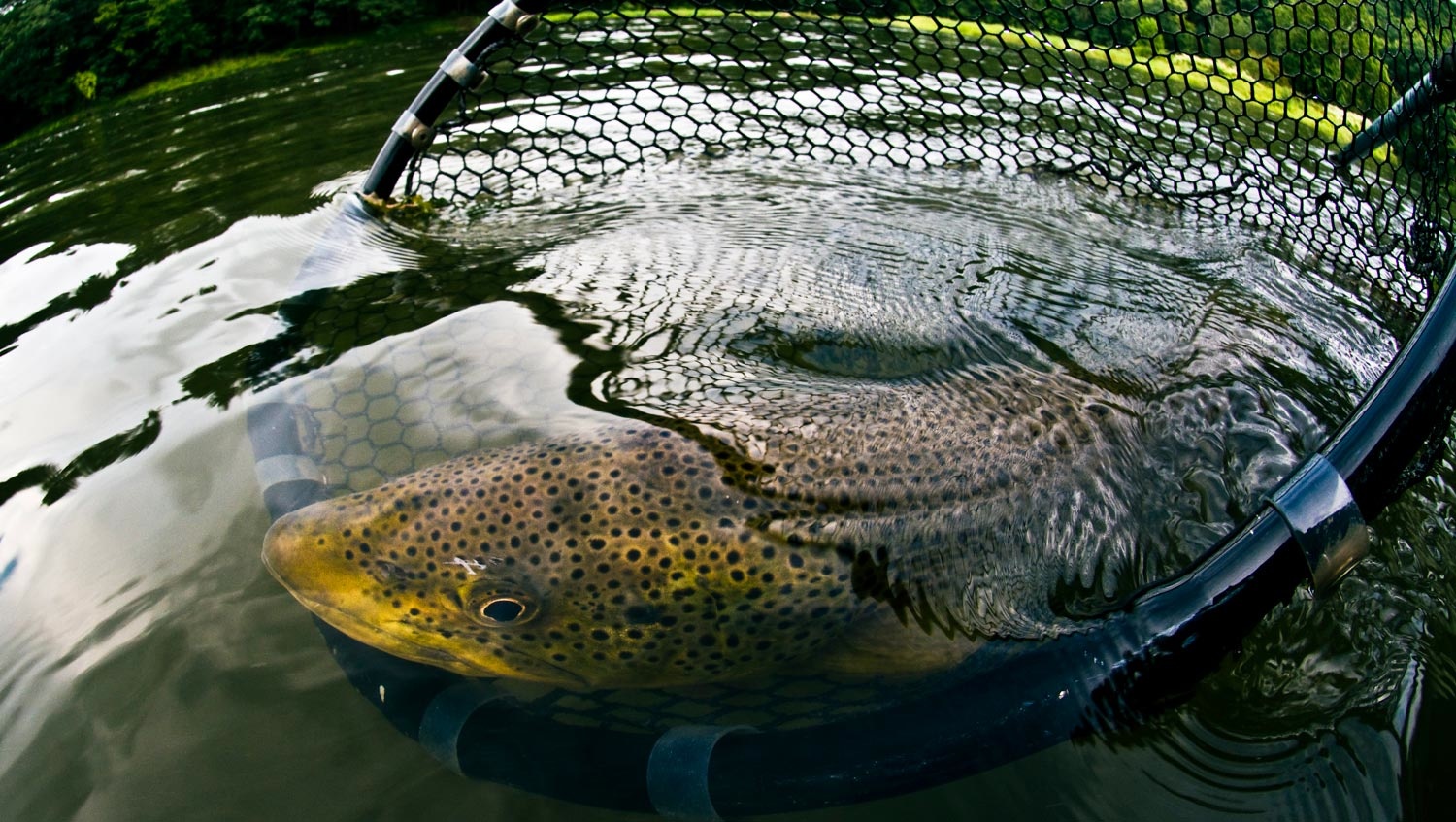
WHAT COMES TO MIND WHEN YOU LOOK AT THIS PHOTOGRAPH?
This photograph reminds me of the blissful feeling I’m overcome with, just before I release a big beautiful trout back into the wild. There’s something very special about the last few seconds that an angler spends with his/her prized catch before it’s released. Everything seems to slow down, almost as though God is making sure we have time to capture the splendidness of the moment. I like to pretend that when our eyes lock, we mutually feel admiration for each other. I respect the trout for it’s majestic beauty and the thrill of the hunt. The trout in return respects me for my angling skills and belief in catch and release.
Read More »Protect the Head of Your Nymphs with Thin Skin
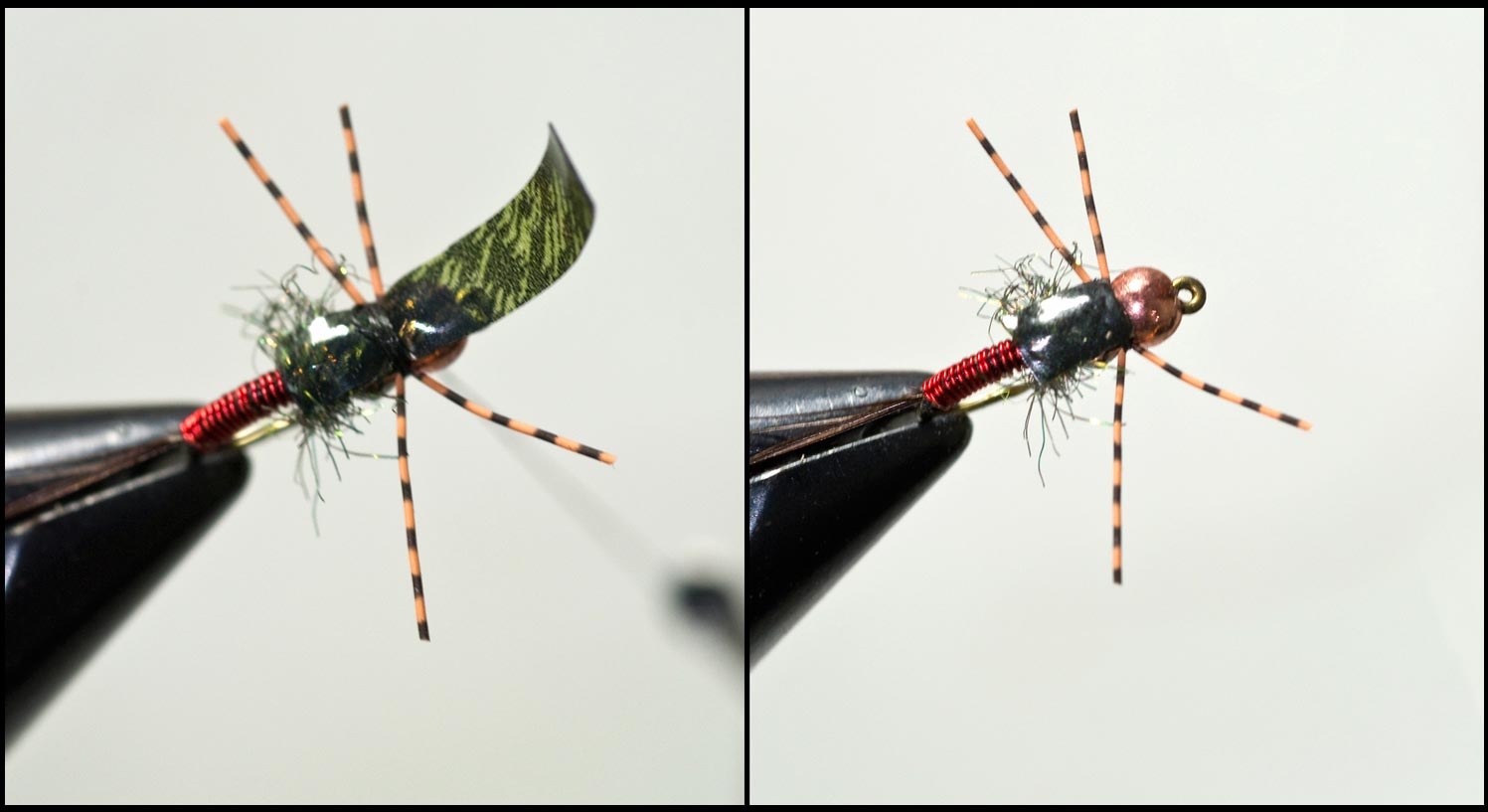
The more durable a fly, the more fish you can catch on it and the longer the life of the fly will be.
Making a point to tie and purchase your flies with durability in mind will save you time at the tying bench and keep a little extra cash in your wallet. Nymphs in general are the work horses in our fly boxes. They’re constantly getting beat up from banging against rocks on the stream bed during our drifts. One way I increase the durability of my nymphs is to finish off the heads of my flies by folding over and super gluing down a piece of thin skin. This tying technique covers the vulnerable thread at the head of the fly and makes a nice looking nymph wing case. In some cases, like with my rubber-leg copper john version above, I use
Read More »Winter Redfish, Challenge and Reward
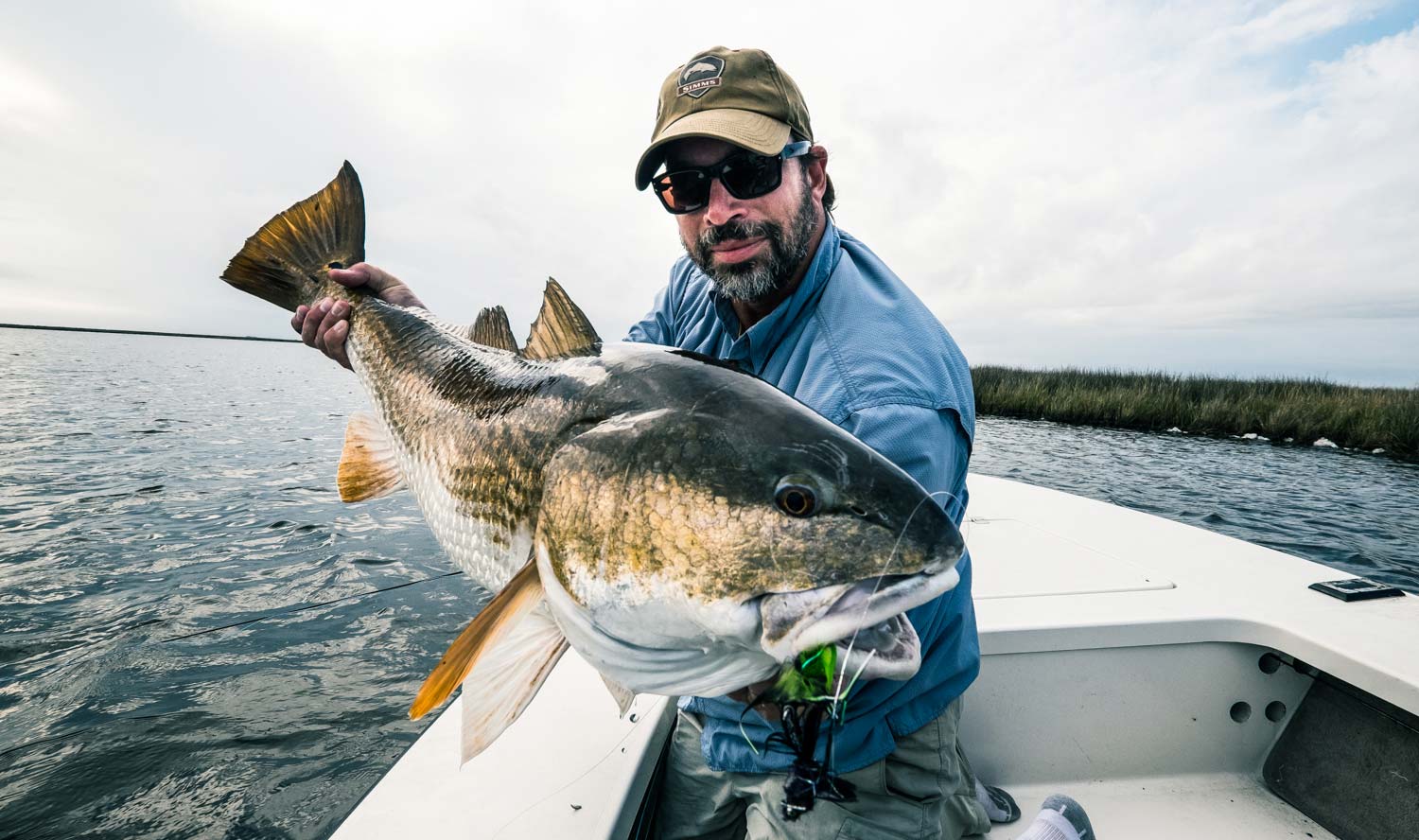
The big winter redfish of Louisiana make anglers hearts race, but there are some serious challenges.
Hooking a thirty pound redfish on a fly is a hoot! The big bulls you find in the marsh around New Orleans this time of year are bullies. As tough a fighters as you’ll find anywhere and simply beautiful. I try to make the pilgrimage every year for the shot at great fish but it’s far from a given.
The fish themselves are aggressive. If you can put a fly close enough for them to see it, the take is usually vicious. The challenges don’t lie with the fish, but with the conditions. The winter weather is unpredictable to say the least. When I ask my friend and guide Jessie Register what the odds of having a clear day are he replied, “no better than 50/50.”
Without light, finding these fish in the dark water of the marsh is a daunting task. If the wind is disturbing the surface of the water, forget it. You may still find a fish tailing in shallow water but you’ll work for it. Of course, targeting the smaller fish who are more predictable is always a good option but light is a huge plus when you’re hunting the big boys.
It’s not uncommon to have days where fishing
Read More »Competitive Fishing and Responsibility
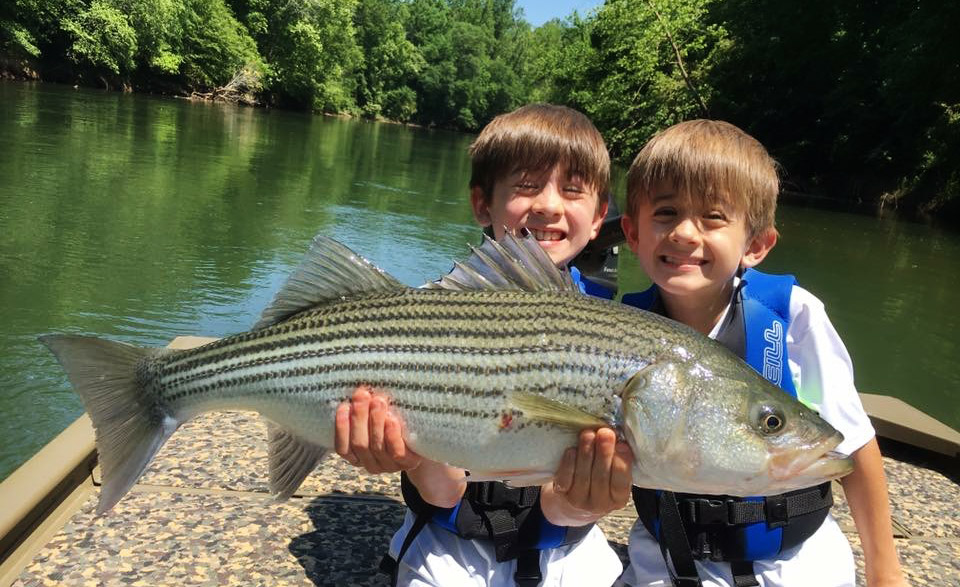
This article, like many I’ve written, began with a conversation I had with my brother, Tom. Tom and I are brothers separated by a mutual hobby. We both love to fish but in very different ways. Tom gets after bass on gear. A skill I respect but don’t especially prefer. I suck with a gear rod and it’s just not the experience I enjoy. It is, however, extremely technical and the guys who are good at it carry a wealth of knowledge on the species. I honestly think that being a good bass angler is harder than being a good trout angler. Tom is good. He’s had a little trouble with his boat. By a little trouble, I mean it was totaled in an accident while he was towing it. This led to him fishing a tournament on the back of someone else’s boat. A guy he did not know. I’ve been plenty vocal on how I feel about competitive fishing. If you haven’t caught that, let’s say, I’m not a fan. I think competition usually brings out the worst in people. Not everyone, but enough folks to make it something I don’t care for. You could feel any number of ways about that and I know from experience that my feelings on the subject make a lot of folks blow steam out their ears. That is, of course, exactly the kind of behavior I’m talking about and it has no place in fishing, as far as I’m concerned. Back to Tom’s experience. This guy he was fishing with had forward facing sonar on his boat. Not how I like to fish but I don’t have a problem with it. It’s the way bass guys often do it and if it makes you happy, knock yourself out. I see no … Continue reading
Read More »Blue Hole Fly-Fishing Setup: Video
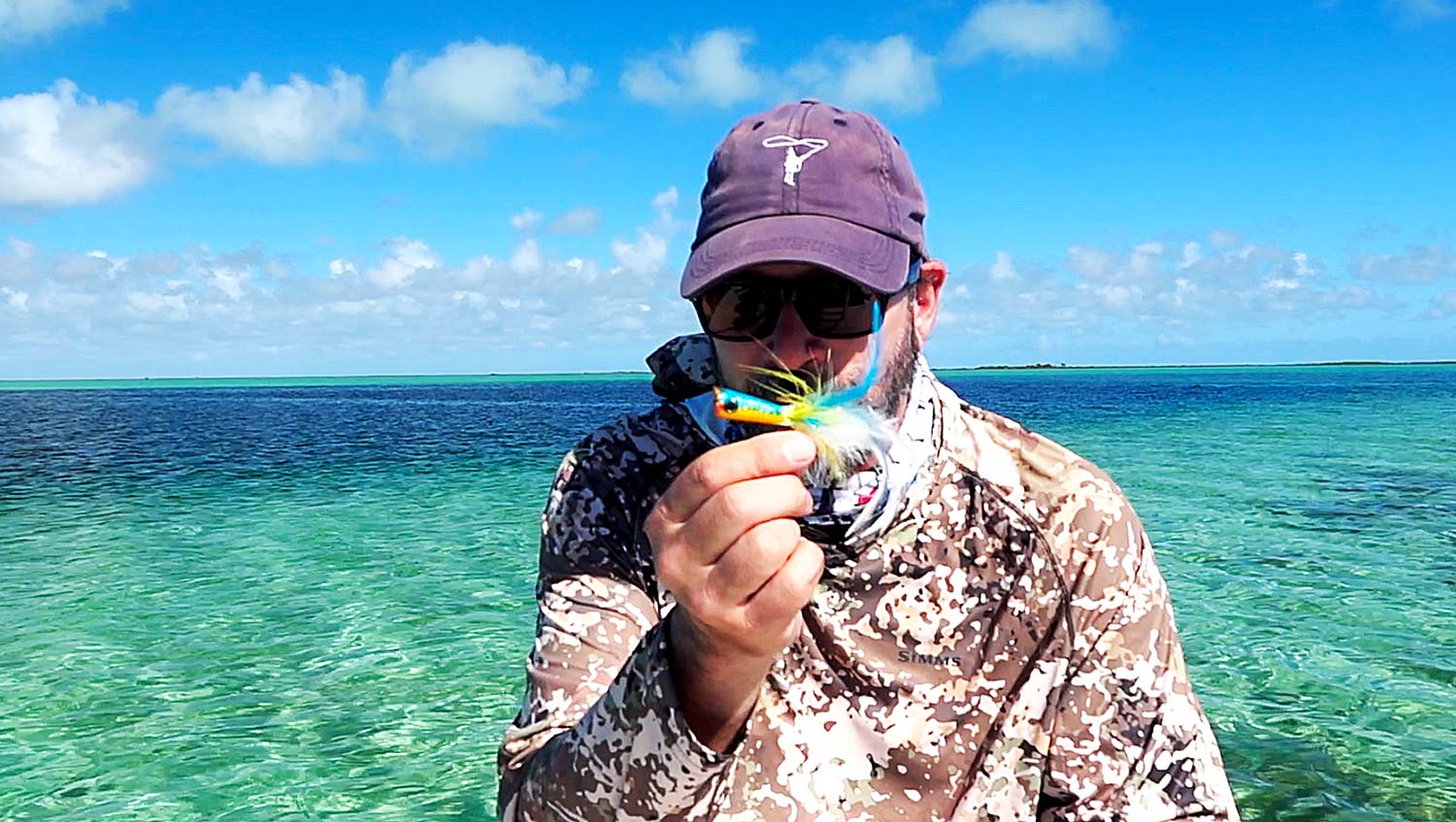
Here’s a simple and incredibly effective setup for catching fish in the blue holes of the Bahamas.
I’m not one of those purist who thinks it’s poor form to deviate from my target species. I like to have fun, and for me, catching different kinds of fish in different ways is part of the experience. One of the coolest things about fishing South Andros, in the Bahamas, is the blue holes. These freshwater vents are perfectly round and can be two-thousand feet deep. South Andros has the highest concentration of them in the world and they are full of fish. You never know what will come out of them.
The problem is, blue holes are really difficult to fish effectively with a fly. Anglers often leave thinking there are no fish there. There are always fish there but, in a two-thousand foot hole, showing them a fly can be tough. I’ve been fishing blue holes for a long time and I have an easy solution to the problem. It takes seconds to set up and catches fish like a net.
WATCH THE VIDEO AND LEARN TO FISH BLUE HOLES EFFECTIVELY, EVERY TIME.
Read More »A Buyers Guide To Flats Skiffs
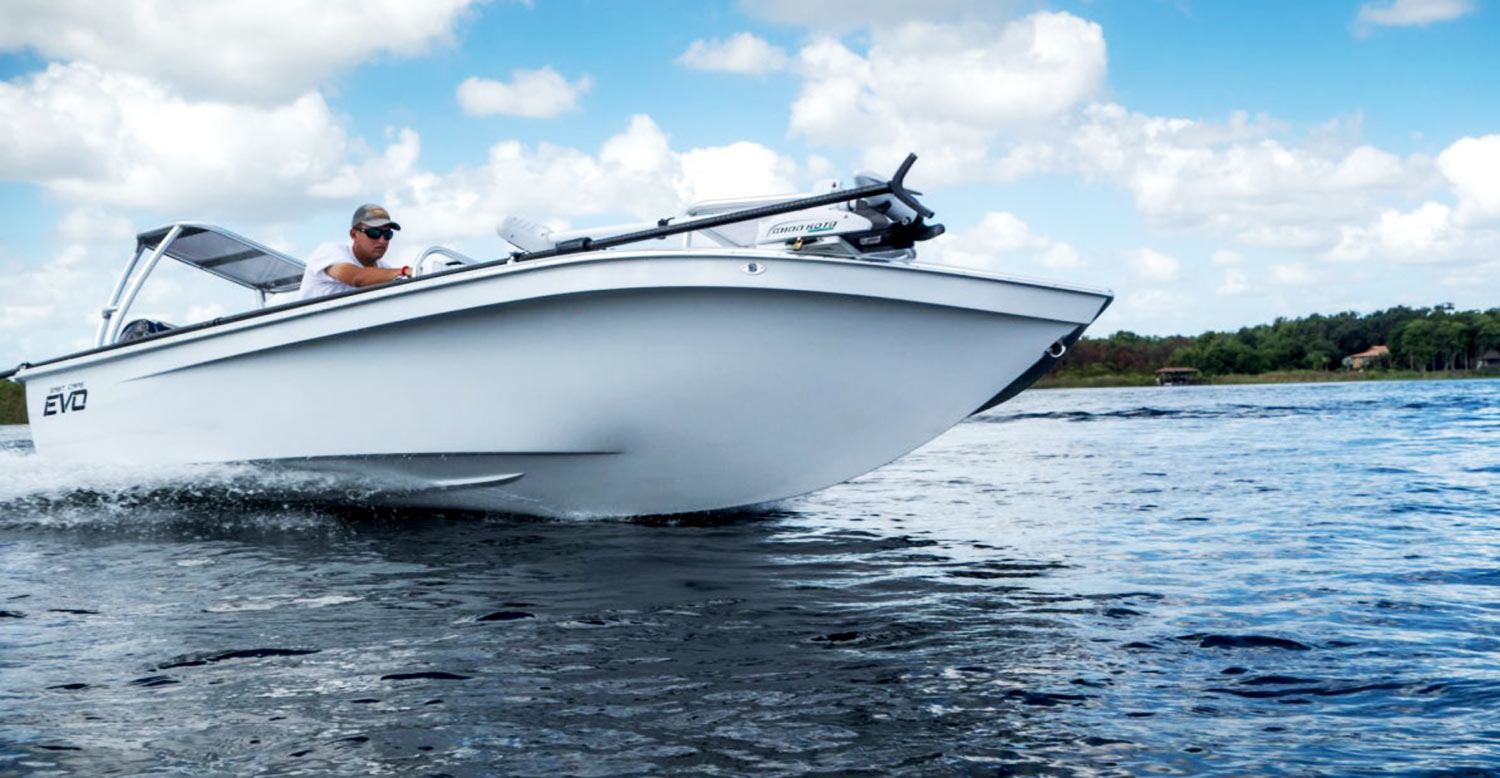
By Owen Plair
As the world of saltwater fly fishing steadily grows, so the does the market for poling skiffs.
There are tons of different flats boat companies out there today and an unreal number of different skiffs to choose from. Each flats boat is designed for a purpose–whether you want to get super shallow, pole deeper for tarpon, or simply have a boat you will only pole on the weekends before picking up the family for a day at the sandbar. Inshore fishing is a lot more affordable and easier than offshore fishing, especially in today’s economy and fuel cost. Be sure that you will use this boat more than 10-12 times of year because it’s often cheaper and always easier to hire a guide than own a skiff.
Steve Seinberg
Steve Seinberg
There are many different types of hulls. Each one is made for a specific kind of fishing, determined by draft and types of water you fish. In short, you want a skiff that will meet your needs in the waters you will be fishing. Write down what your priorities are for your skiff. Things like draft, poling ability, comfort, size, storage, engine, how many people you will have on board, and most importantly price. These are all factors that will help you decide what kind of skiff you will be happy with. Most of all, keep in mind that your wants may not be perfectly met, because no matter how you look at it, there will always be a compromise of one preference to achieve something more important.
DO YOUR RESEARCH:
One great asset when buying a flats boat is the internet. There are endless places to shop and get a feel for the flats boat market. Boat Trader, dealer websites, forums, and even Craigslist. Once you have an idea of the boat you’re interested in, start Googling for forums and articles about that certain boat. Websites like Micro Skiff and Skinny Skiff have good information on different poling skiffs. Another great trick is to look for the skiffs guides are using in your area. These guides make a living on their skiffs, and have plenty of good information from personal use. I always recommend going out with a guide who runs the skiff you’re looking at. Not only get more information about the skiff but actually fish on the boat.
THE TECHNICAL SKIFF:
DSC04420-1200x800The term “Technical” is used a lot in the flats boat industry. Mostly referring to skiffs that are designed for the angler who wants the absolute best performance when poling, fishing, and running. This is the badass side of the skiff market and usually the most expensive because of how they are built and how they perform on the water. People sometimes complain about how expensive these skiffs can be, but there is a reason they cost $35-60K for a brand new 17ft boat. Companies like Maverick Boat Company, Hells Bay Boatworks, East Cape Skiffs, Chittum, Beaver Tail, Dolphin, and other big names put a lot of time in research and development. These technical skiffs are designed and built for fishing the flats just like a Lamborghini is built for going fast. The history behind these skiffs is amazing and it’s truly unbelievable how much technology has been developed over the last 20 years. It all started with a boat to get you and your angler shallower, and closer to the fish in their natural environment.
GLIDE-2015-30-SUZUKI-ICE-BLUE-TILLE-PERRY-MCDOUGALD-EAST-CAPE-SKIFFS-BOAT-IMAGE-GALLERY-CUSTOM-BOAT-BUILDER-FISHING-SKIFF-MANUFACTURER-119fcb36b4-1200x884Size is a key factor for a technical skiff. These are skiffs between 15-18ft and draft between 4-8 inches of water. They are small, lightweight, and made for poling in shallow waters. Anywhere from 6 inches of water for tailing fish or 10ft of water for migrating tarpon. These are not boats to take a bunch of people on and usually have a limit of 2-3 people max. They are often a tad tippy when walking around but again they are designed to have a person on the bow casting, the other sitting on the cooler, and someone on the tower poling. The way these skiffs perform in their desired fisheries is what makes them “Technical” and they are one of the most important tools in saltwater fly fishing.
Lots of other factors come in to play.
Read More »Watch That Hook Set!
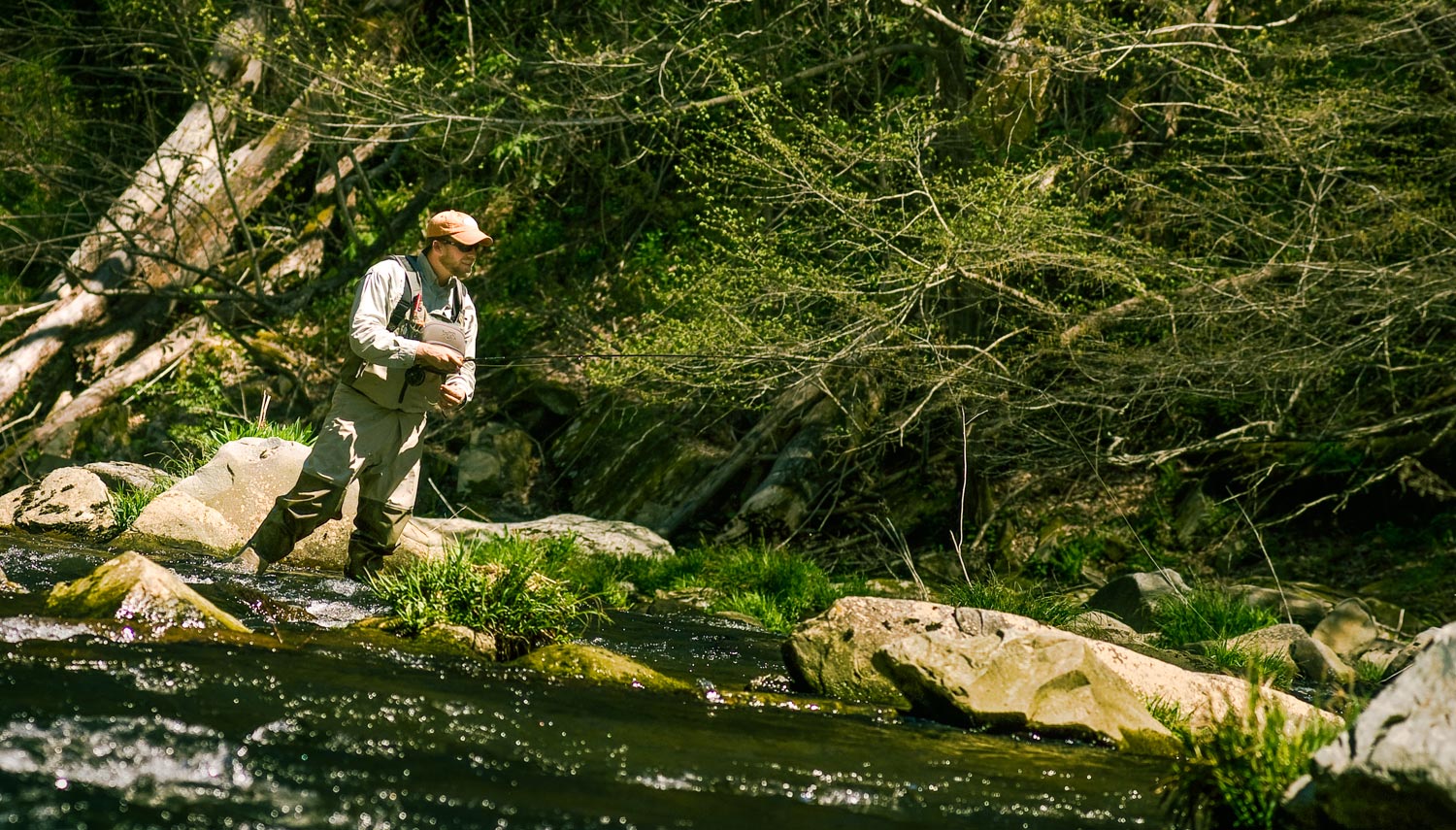
By Justin Pickett
You’ve just sent your flies along their path to greatness.
Your dry/dropper lays out sweetly onto the surface of the water, right where you wanted it. As you watch your fly doddle along the bumps and bubbles, it happens… The broad nose of a hungry trout emerges from the underworld and nonchalantly gulps down your dry. Everything goes just as planned as you wait for the trout’s nose to dip before setting the hook, and just as that snout tips… you set your hook right into a bush or a tree, possibly costing you a proper hookup on this trout. Maybe you smacked your buddy in the face. Or worse, what if your rod got hung in an overhead limb while the fish was hooked up and subsequently broke your rod tip? I’m speaking from experience on every single one of these examples!
Preventing any of these scenarios is as easy as just taking a look around before making your cast. Take note of your casting obstacles, many of them are likely to become obstacles during your hookset as well. The obvious killers are the overhead limbs and bushes, but don’t overlook
Read More »Restore an Old Bamboo Fly Rod #6: Video Series
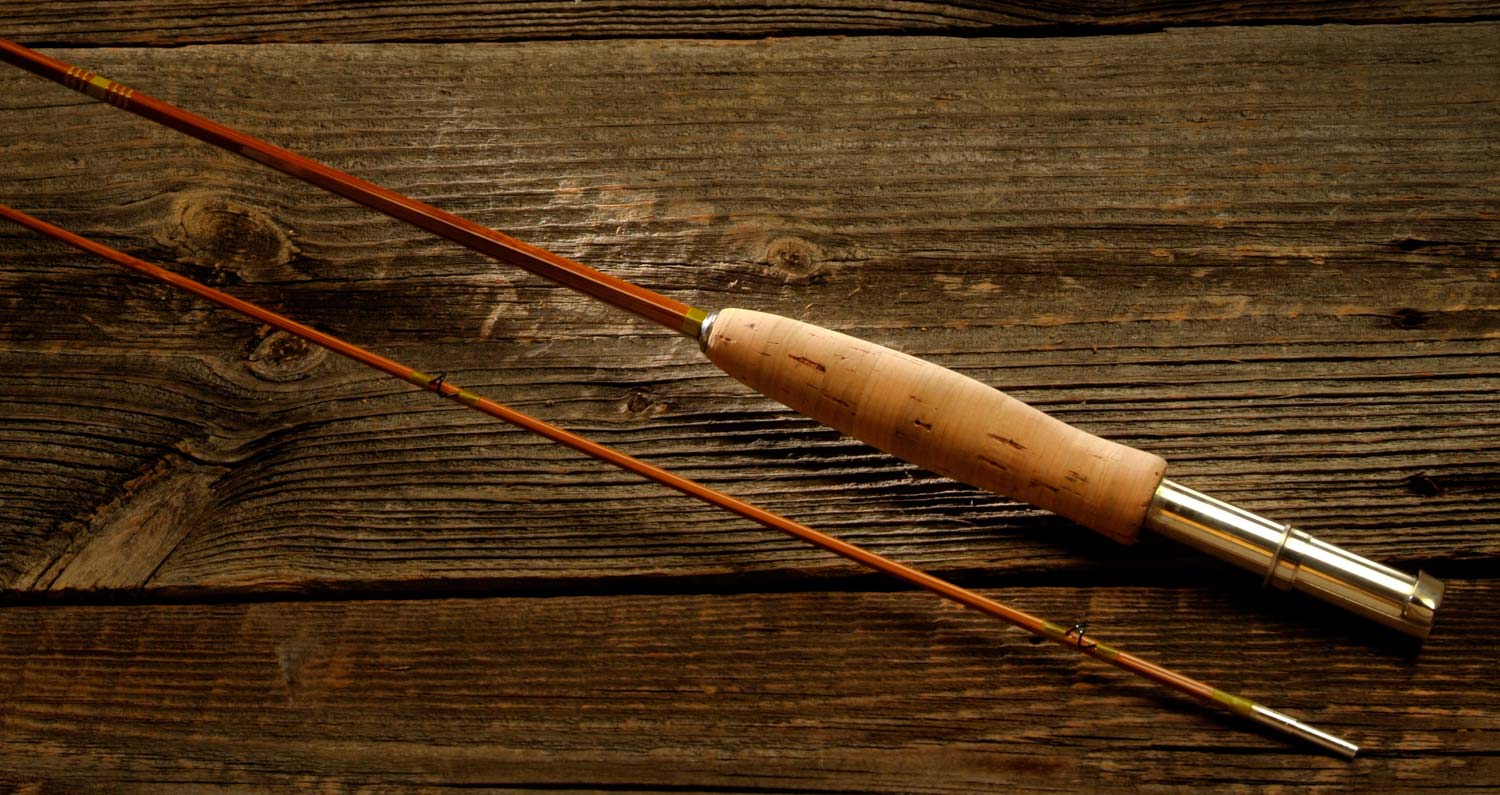
Matt Draft is back with the 6th and final episode of our bamboo fly rod restoration series.
In this video, Matt shows you how to repair a bamboo fly rod that has delaminated. You’ll learn how to repair the separated sections and reinforce the repair with invisible wraps.
Thanks Matt! for this great series.
RESTORE AN OLD BAMBOO FLY ROD #5
Read More »Everything You Wanted To Know About Flyfishing Leaders But Were Afraid To Ask
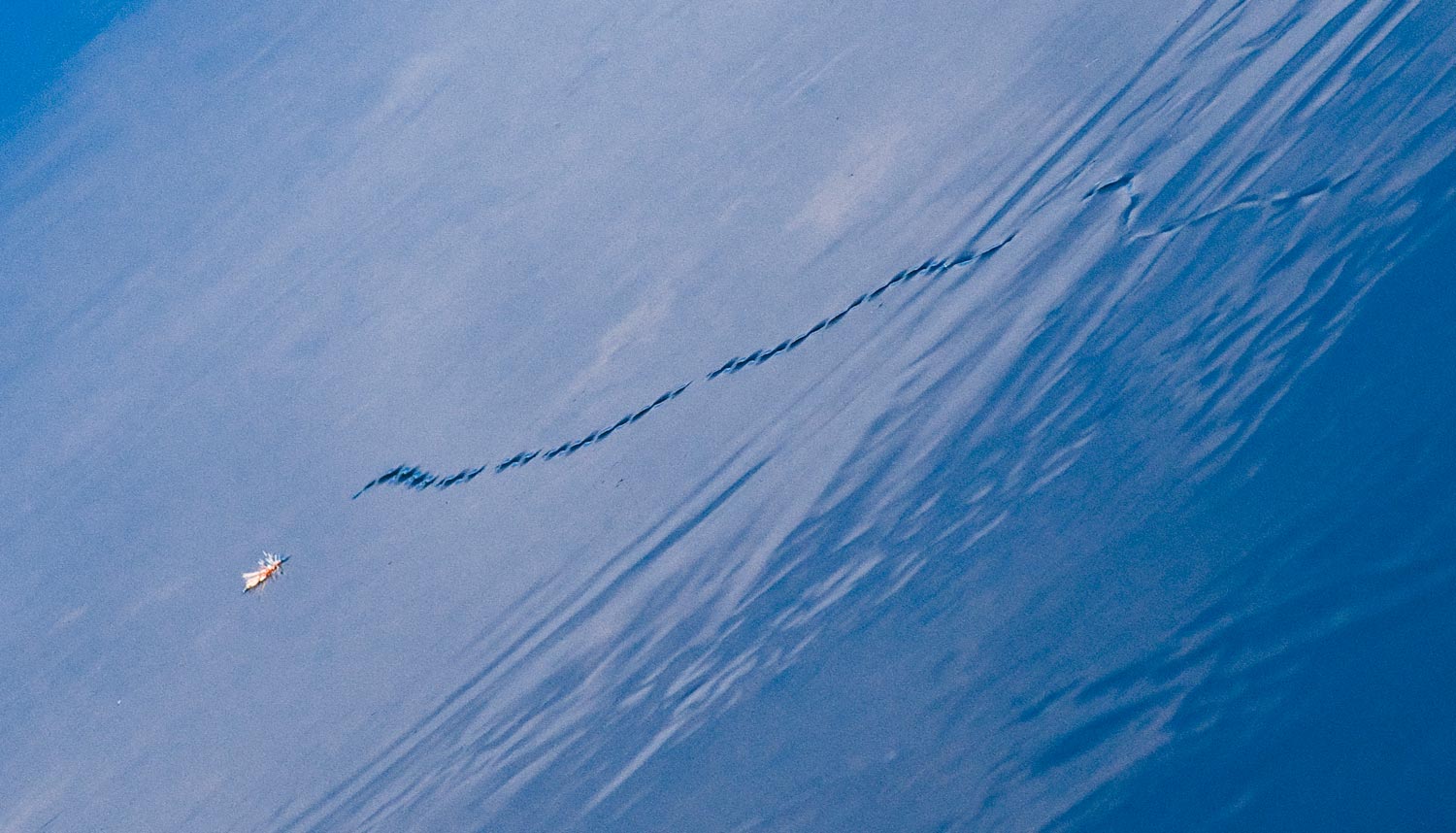
By Kevin Howell
When I began fly fishing, quality leaders were very hard to find.
The best leaders were hand tied by the Dan Baily Company in Livingston, Montana or the Orvis Company. The problem is that the tying process involved wetting the knots which, when stored over a period of time, made the knots weak and anglers would use a new leader only to have it break at the knot. Today there are countless options for anglers to choose from — not only do anglers have to choose a length and a taper design, but leaders are available utilizing Monofilament, Fluorocarbon, Braided and Furled technology.
The leader is responsible for transferring the energy from the fly line to the fly resulting in fly turnover and how it lands on the water. Leaders consist of three sections — the butt section, the midsection and tippet. The tippet is generally the last 18-24” of the leader where it connects to the fly. The midsection is the next two feet, and butt section is generally 4-5 feet and considerably stiffer. The leader should start about the same diameter as your fly line and then taper down gradually and continually until it reaches the tippet which will be a 18-24” section of the same diameter.
Of the four major types of leaders on the market, the Monofilament leader is by far the most common, with Fluorocarbon claiming second followed by braided and then furled. Today’s pre-drawn mono leaders are leaps and bounds ahead of previous mono leaders. They are strong, well designed with quality tapers, and are even starting to specialize. You will find leaders meant just for nymph fishing, leaders for dry fly fishing and everything in between.
The only downside to the mono leader is that when it gets abraded or a wind knot, it is going to break every time resulting in lost rigs or lost fish. Fluorocarbon leaders are available in the same tapers as monofilament and also very abrasion-resistant, but come at a much higher price– 2-3 times more expensive than mono. Fluorocarbon leaders are also denser than water, so they tend to sink slowly. If you are trying to fish dry flies or watch your leader for strikes, this becomes quite difficult with a leader that is slowly sinking.
Braided leaders offer excellent turnover and are almost indestructible; you simply replace the tippet when needed. However, if you are fishing over-spooky or pressured fish, they will spook the fish every time. Water sprays out of the braided leader on the forward cast and it slaps the water when landing. Braided leaders are also heavy and struggle to float especially after being fished a little. They pick up water scum and dirt, causing them to sink more than they float.
Furled leaders do not spray water as badly as a braided leader do but do spray some water on the forward cast. They also tend to sink as soon as they are fished a little bit and absorb dirt and water. Since furled leaders are not commercially produced you will have to find someone to make them for you or invest in the jigs and material to produce them yourself.
After twenty years in the guiding and outfitting business, I have found a quality monofilament leader with a fluorocarbon tippet to be the best all-around leader.
